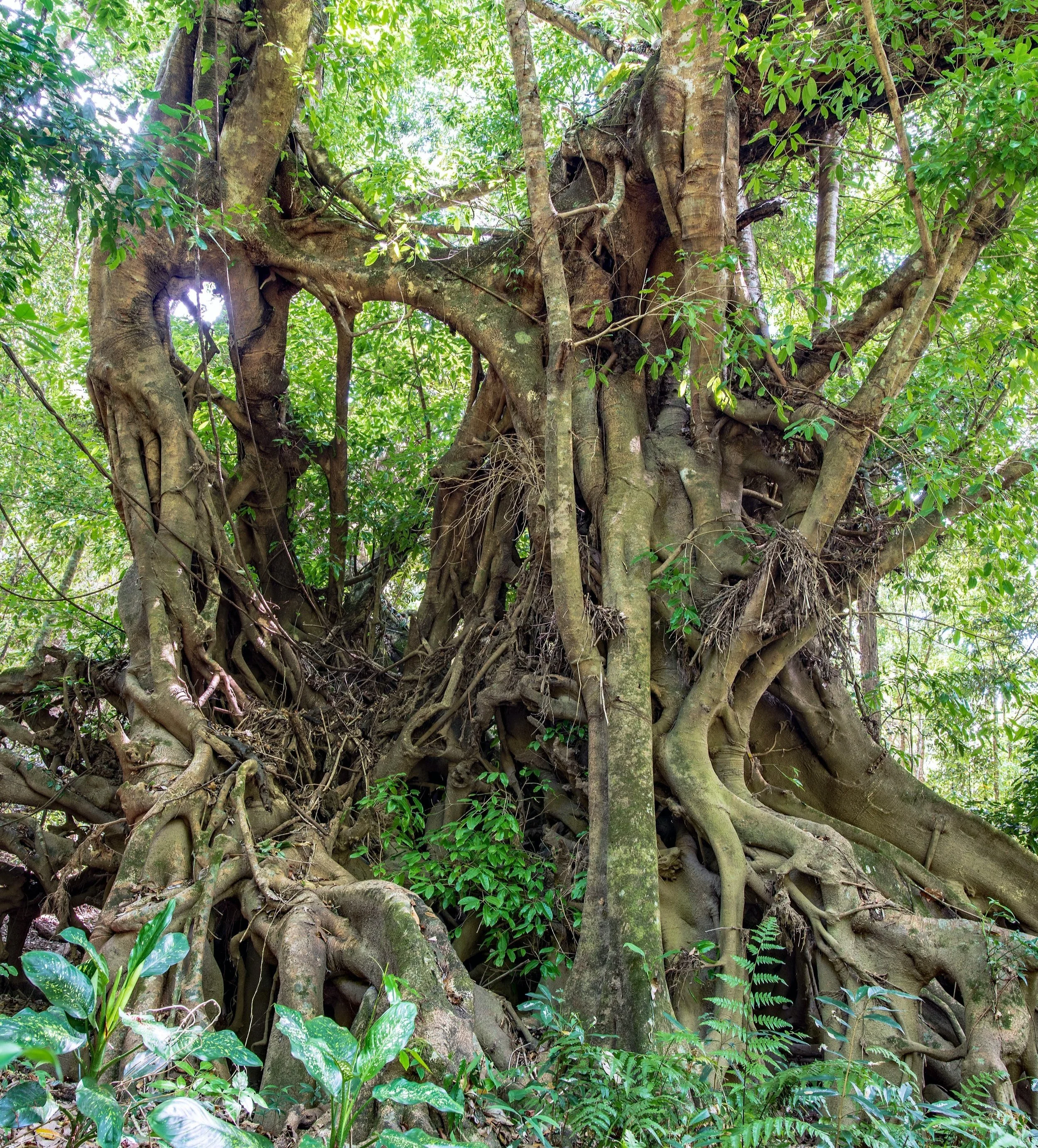The tree stump was massive, and the inner core had rotted over the 400 years since it had toppled. Yet the wood on the outside of the stump was still alive. How was this possible without having its own leaves to provide energy through photosynthesis? The answer: the stump had been nourished by the root system of neighbouring trees for over four centuries.
It was observations like this that led arborist Peter Wohlleben to write “The Hidden Life of Trees”. What he found was that in a multitude of ways, trees nourish, warn and defend each other far more than we realized. They do this by working within the ecosystem they are part of; sending signals through the air and the fungi in the soil, and providing resources to neighbours via their roots.
Why would trees channel their energy to neighbouring trees who are struggling, when they are all competing for sunlight? It’s simple: they are stronger together. The trees need the forest to thrive; it protects them from storms, it buffers them through droughts and floods, it creates the microclimate best suited to them and, provides early warning of attacks from insects and fungi.
In an age where divisiveness is easy and rampant within our society, there is much for us to learn from the wisdom of trees.
What We Can Learn from Trees
1. Our Roots are Intertwined. As much as we may think we are individuals, separate and different from each other, if we look below the surface, we will find that our roots are intertwined. That as we dig deeper, we find that we have far more in common than we think.
This idea that there is more that we share than what makes us different was brilliantly captured in a Danish TV ad entitled “All That We Share”. If you haven’t seen it, this is worth the three minutes of your day - check it out!
2. Embrace our Differences. The most prolific and resilient forests on the planet tend to be the most diverse. The interweaving of many species makes them stronger. Yet in our own world, it is easy for us to default to cliques and intolerance of other perspectives. Our ‘survival brain’ finds comfort in the familiar and, in our distant past, it was in our interest to be suspicious when first encountering a different tribe. Today, our communities and organizations tend to flourish when we embrace our differences, when we foster diversity and inclusion in healthy ways.
3. Support Each Other. Yes, there is a competitiveness in the forest to grow high and gain more light. But there is also an understanding that if you are the highest tree, standing alone and exposed, you are at risk. Same goes for a monoculture. Just like the forest, we are stronger together and this means caring for and supporting each other rather than over competing or turning each other into a threat.
How About You?
Who needs some extra support in your world? Where could you be more open to differences? And how can we all focus more on being a source of positivity, hope and optimism, knowing that our emotions infect those around us?
To learn how you can better share and amplify more of what unites us, such that your team is stronger together, check out webinars like “The Neuroscience of the Resilient and Connected Leader.” These are the webinars that are helping teams to thrive no matter what’s happening in their world.

